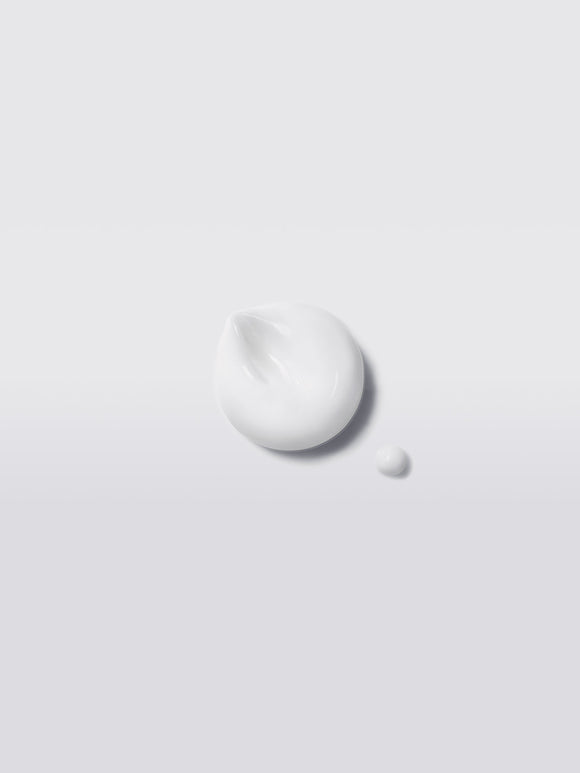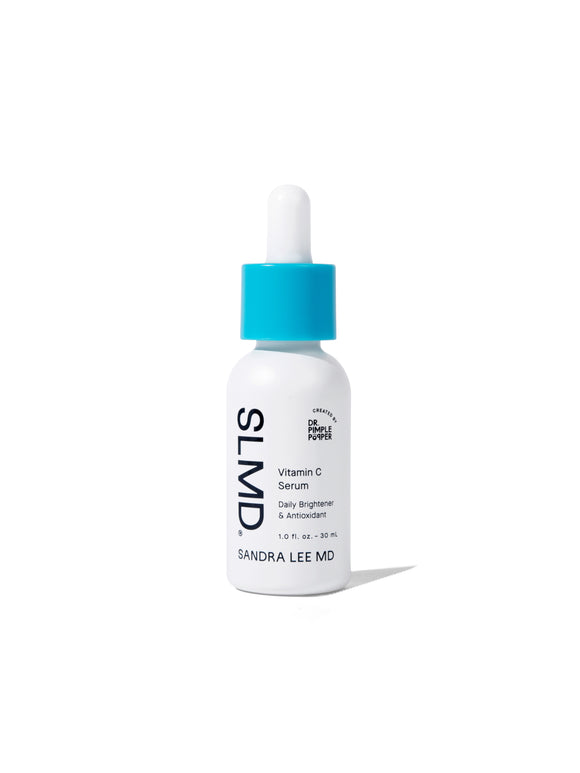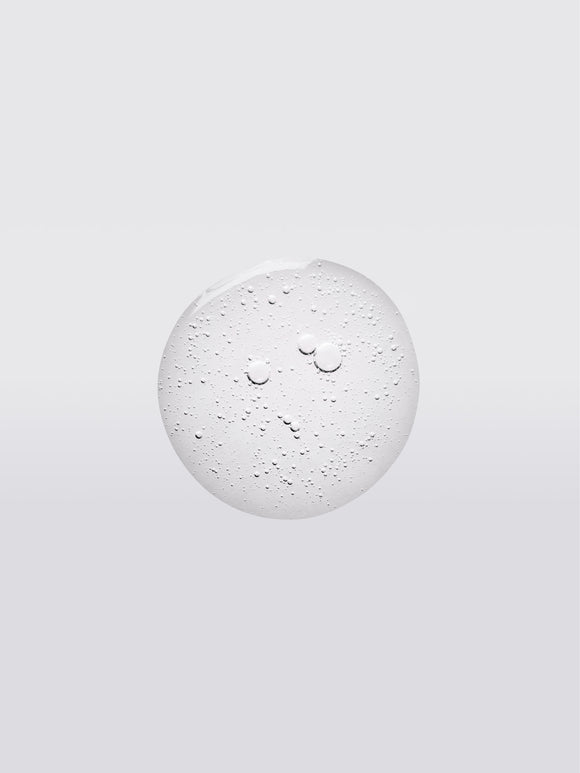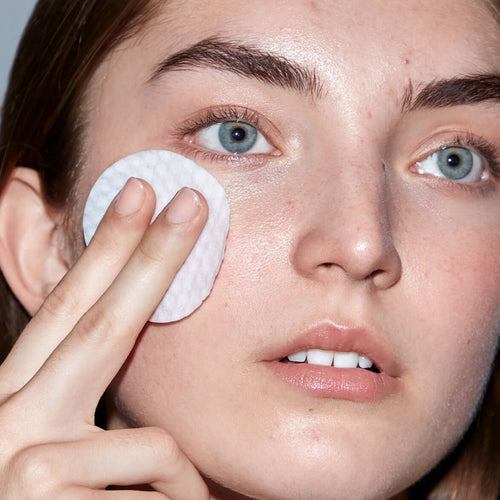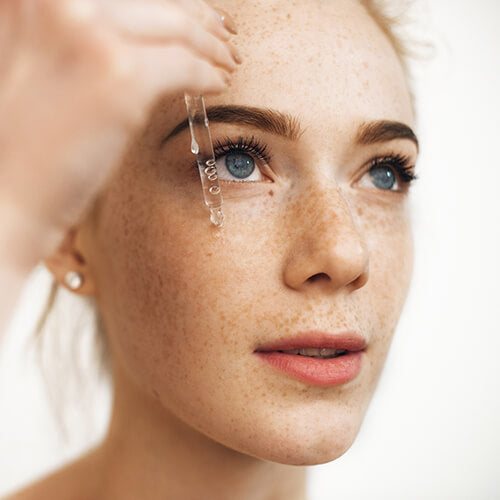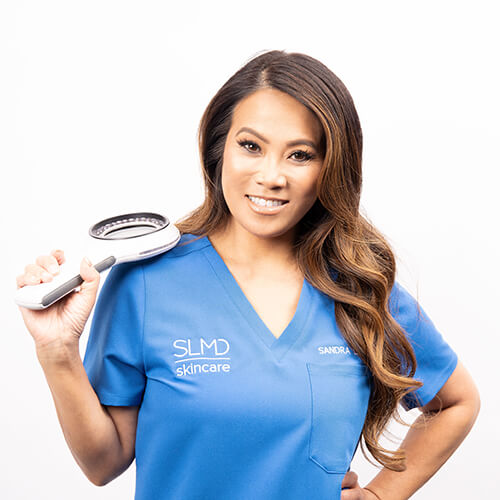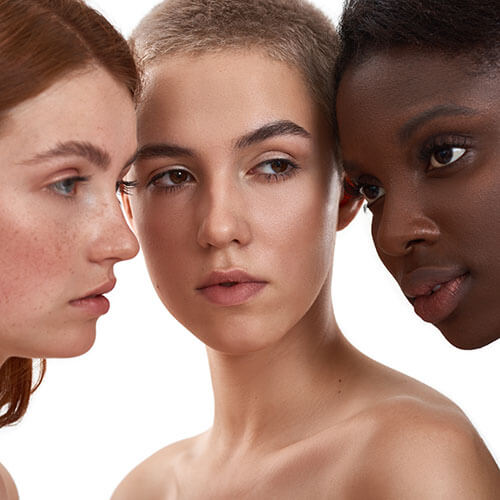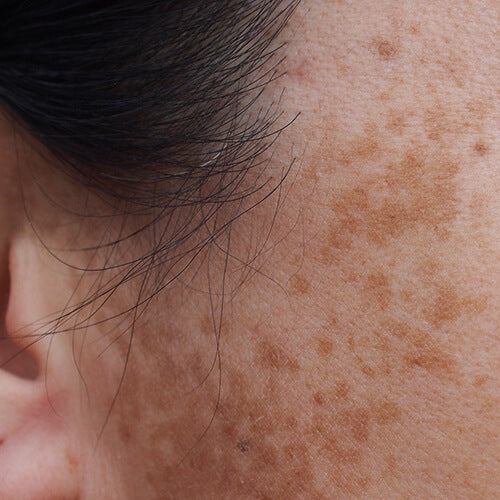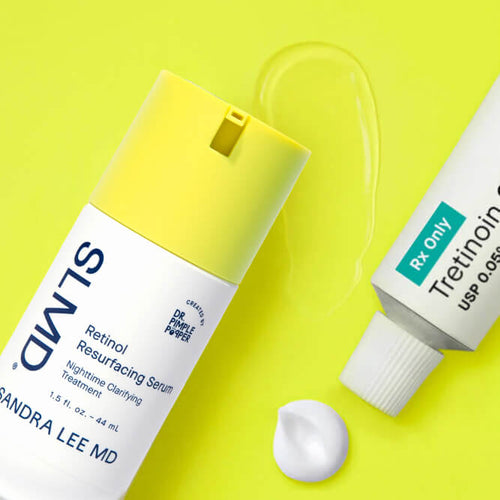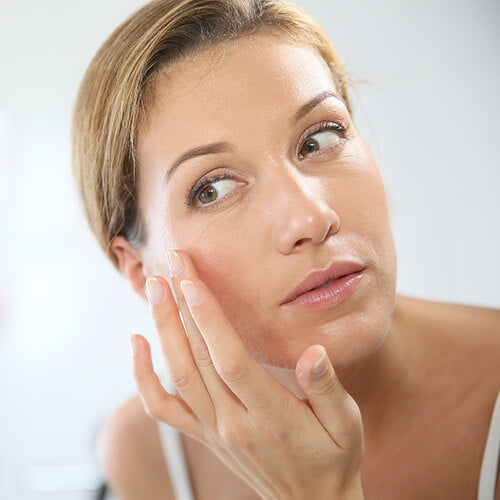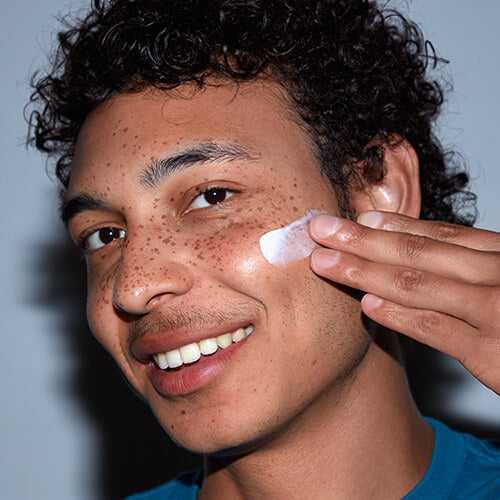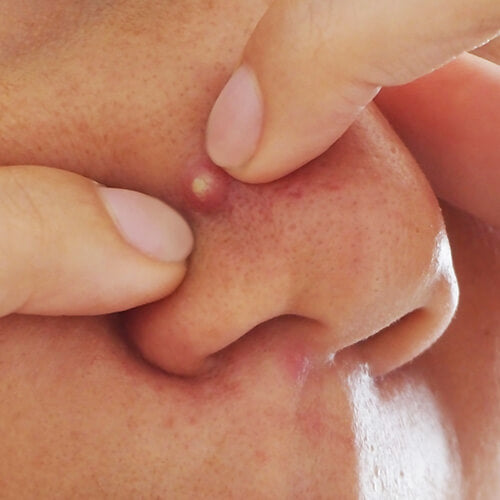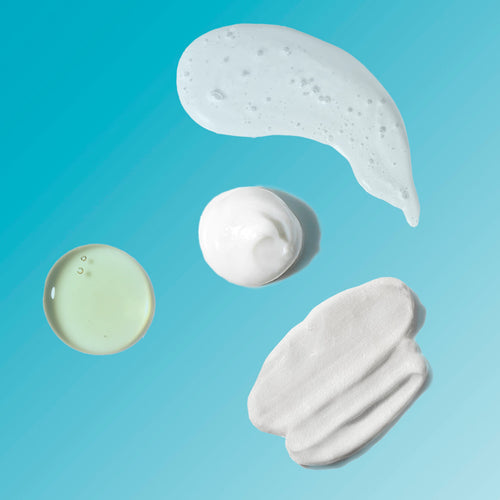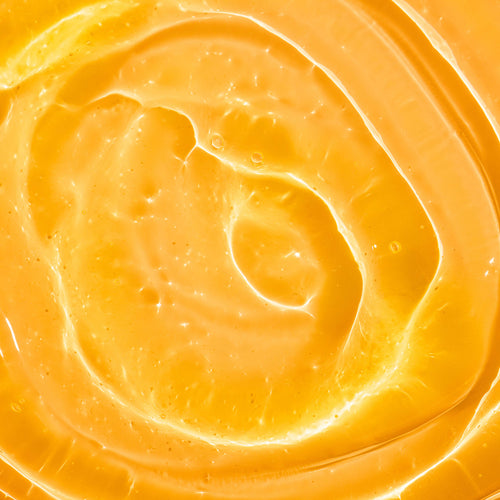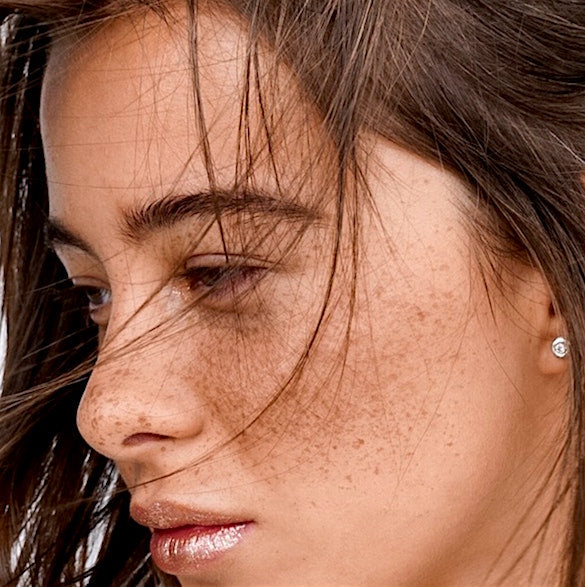
Freckles vs. Sun Damage: Understanding the Differences
What exactly are these "sun kisses" — and are they dangerous? We put the rumors to rest.
Published:
4 minute read
There’s no denying it — freckles are in! Those who weren’t gifted the freckle gene at birth have even started tattooing or drawing them on. But for all the admiration and attention these spots can bring, exactly why some people have them and some don’t is a mystery for many of us.
So what exactly causes freckles: is it genetics? Or are freckles really sun damage? We asked dermatologist and SLMD Skincare founder Dr. Sandra Lee (aka Dr. Pimple Popper) for answers.
Article Quick Links
What causes freckles?
Technically called ephelides, freckles are the result of sunlight and genetics. When ultraviolet light penetrates the skin, it sets off chemical reactions (some helpful, some harmful). Antioxidants and other substances present in the skin help protect against the dangerous free radicals released during these reactions. But those safeguards can be overwhelmed — especially in those with lighter Fitzpatrick skin types I and II. This is where melanin comes in: specialized skin cells (aka melanocytes) produce this pigment, releasing quantities within granules called melanosomes.
People who have a tendency to develop freckles have dense clusters of melanocytes, rather than a more evenly distributed pattern. Research has linked this to a mutation in the melanocortin-1-receptor gene (MC1R), which also coincides with red hair — more on that later.
When those melanocytes get triggered by ultraviolet radiation to produce melanin, it pops up more heavily in distinct patterns of ephelides. This is why freckles tend to form on areas of the skin that are exposed to sunlight — like the face, arms, shoulders and hands.
What is sun damage?
Sun damage, medically termed photoaging, occurs when the skin is exposed to ultraviolet (UV) radiation. UVA and UVB rays from the sun can penetrate the skin and cause various forms of damage. UVA rays can prematurely age your skin, causing wrinkles and age spots (aka hyperpigmentation), while UVB rays are responsible for sunburn. Over time, these rays can cause mutations in skin cells, potentially leading to skin cancer.
Dr. Pimple Popper's Sun Damage Prevention Picks
Key differences between freckles and sun damage
Freckles are a natural response to sun exposure, influenced by genetic factors. They are typically small, tan, or light brown spots that appear on sun-exposed areas of the skin and can fade with reduced sun exposure. On the other hand, sun damage results in larger, darker, and irregular spots, such as sunspots (solar lentigines), which persist and accumulate over time.
- Origin: Freckles are primarily genetic and influenced by sun exposure, while sun damage is purely environmental.
- Appearance: Freckles are small and uniform in color, whereas sun damage manifests as larger, darker, and more irregular spots.
- Behavior: Freckles can fade with reduced sun exposure, but sun damage tends to be permanent and cumulative.
So how do you tell the difference between freckles (ephelides) and sun spots or liver spots (solar lentigines)? Three main factors differentiate these dark marks:
- Timing: freckles tend to appear during youth, while sunspots occur later in adulthood.
- Duration: freckles often fade & darken with seasonal changes, while liver spots stick around.
- Size: typically, ephelides are smaller (0.5 cm or less) than solar lentigines (0.5–2.0 cm).
Can freckles turn into skin cancer?
Anytime we have dark spots on the skin — freckles, moles, sunspots and the like — we need to monitor for precancerous or cancerous changes in size and shape. Yearly visits to your dermatologist for full-body skin checks are recommended to catch dangerous developments as early as possible. Some things to watch out for:
- Density changes: when freckles/patches of freckles seem to be growing larger
- Color changes: when freckles get darker or turn red (this could be a harmless cherry angioma)
- Texture changes: when freckles/patches of freckles become raised or rough
According to Dr. Lee, those with a propensity to freckle need to exercise extra caution. The reason stems from that MC1R genetic mutation we mentioned earlier: turns out, this variation that results in a tendency to freckle is also associated with higher risk of both melanoma and non-melanoma skin cancer.
Even with this predisposition, it’s just not practical (or advisable!) to avoid sunlight altogether. After all, our bodies need some UV exposure to produce vitamin D, which has immune-boosting and protective effects against many conditions, including breast cancer, colon cancer, and heart disease. The best strategy is to be sun smart.
Preventive measures for all skin types
- Use sunscreen regularly: Wear broad-spectrum sunscreen every day, regardless of the weather or your skin tone. Try: SLMD Daily Moisturizer with SPF 15
- Reapply every two hours and after swimming or sweating
- Wear protective clothing: Opt for hats, sunglasses, and long sleeves to minimize UV exposure
- Seek shade: Avoid the sun during peak hours (10 a.m. to 4 p.m.) when UV radiation is strongest
- Monitor skin changes: Regularly check your skin for new or changing moles and spots. Early detection is crucial for preventing skin cancer.
- Use antioxidants: Incorporate antioxidant-rich skincare products to combat free radicals caused by UV exposure. Try: SLMD Vitamin C Serum
Dr. Pimple Popper answers your freckle FAQs
Q: Can freckles appear without sun exposure?
A: Freckles are primarily caused by sun exposure, but genetics play a significant role. Some people may notice freckles even with minimal sun exposure due to their genetic predisposition.
Q: Are people with freckles at higher risk of skin cancer?
A: Yes, people with freckles, particularly those with the MC1R gene mutation, have a higher risk of both melanoma and non-melanoma skin cancer.
Q: How can I tell if a freckle is dangerous?
A: Monitor for changes in size, color, and texture. If you notice any significant changes, consult a dermatologist.
Q: Do sunspots ever go away on their own?
A: Sunspots, or solar lentigines, typically do not fade on their own and may require treatment to reduce their appearance.

Dr. Lee's Last Word
It’s important for everyone — no matter your skin tone — to protect yourself against UV radiation, because it not only causes premature aging, but skin cancer. People with paler skin, especially those who tend to freckle rather than tan, are at increased risk. While freckles aren’t harmful, it’s a good idea to get examined regularly by your dermatologist to check for changes. And don’t forget to wear sunscreen everyday!




